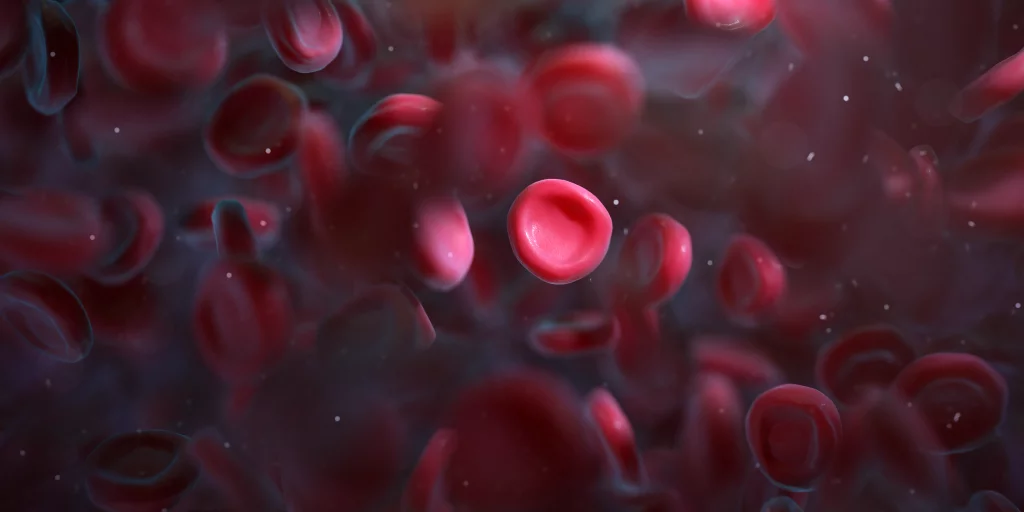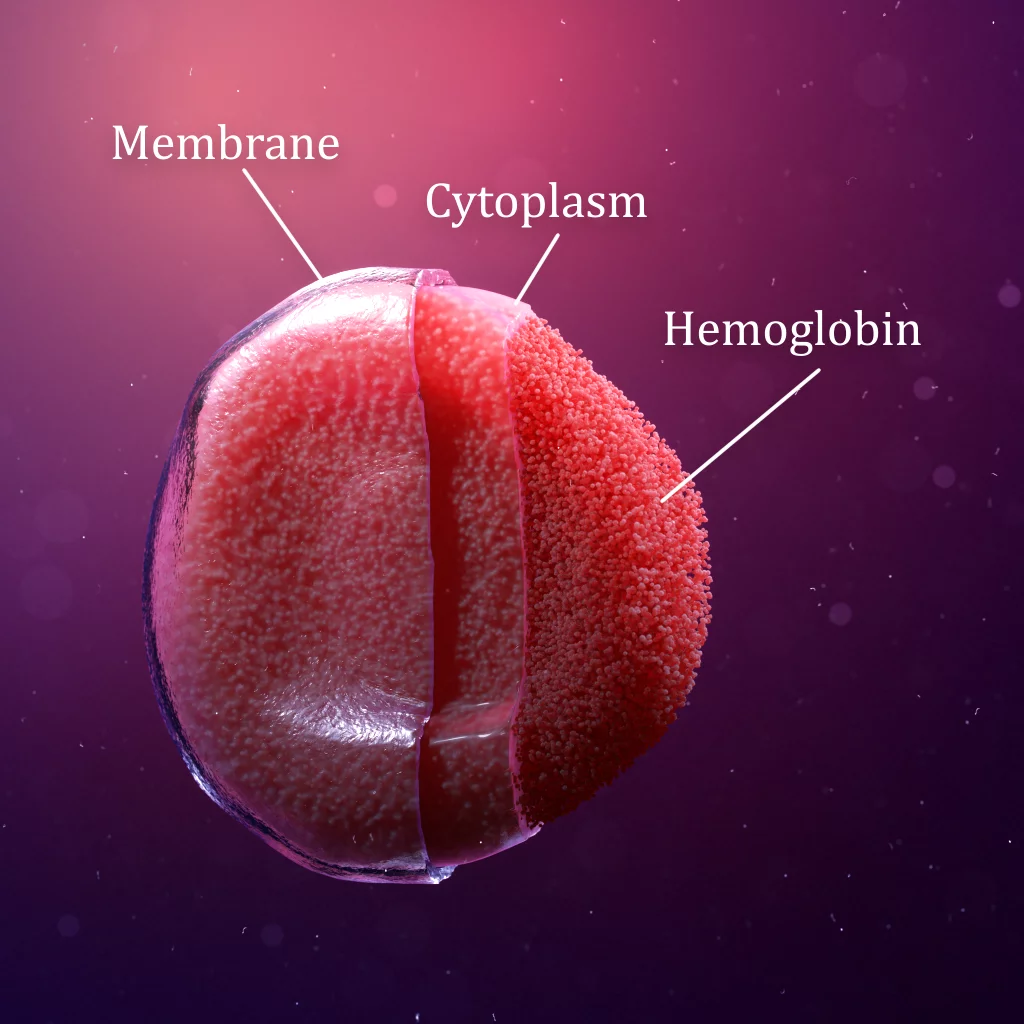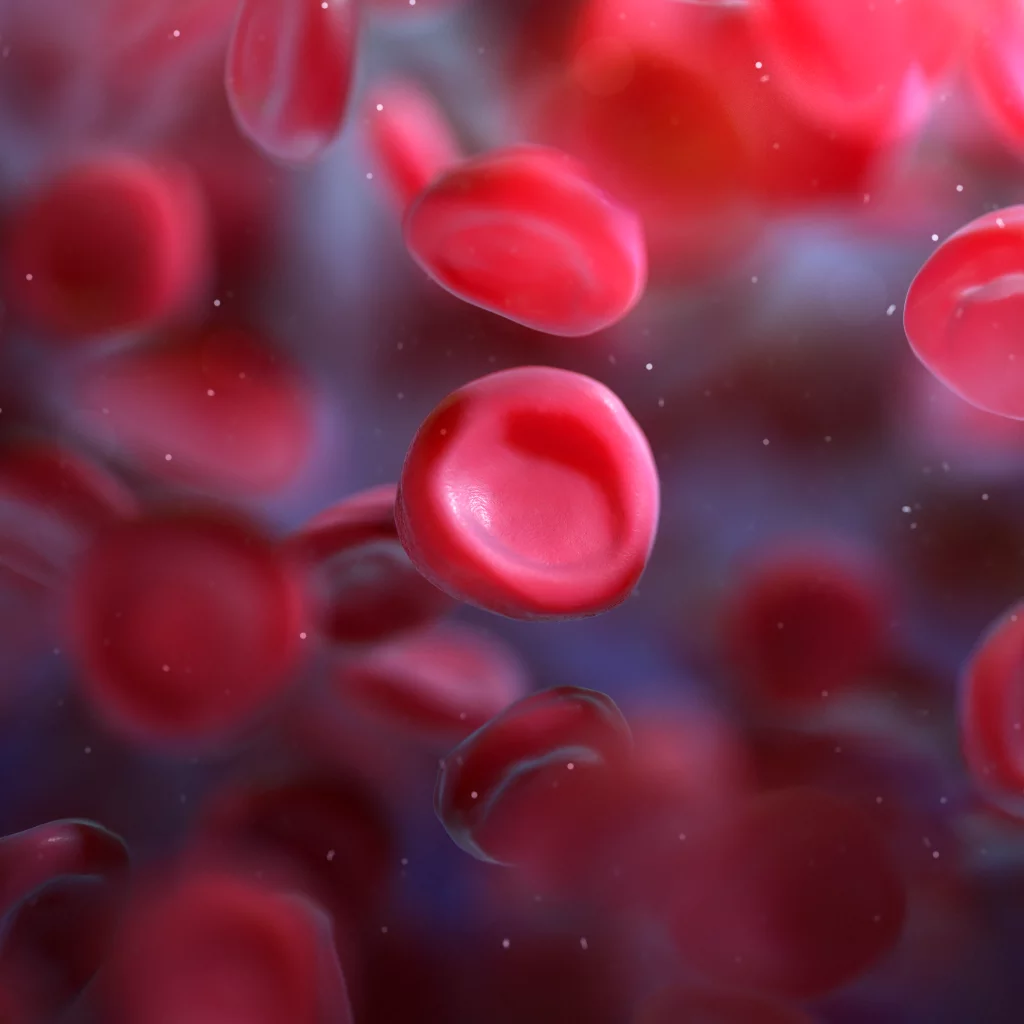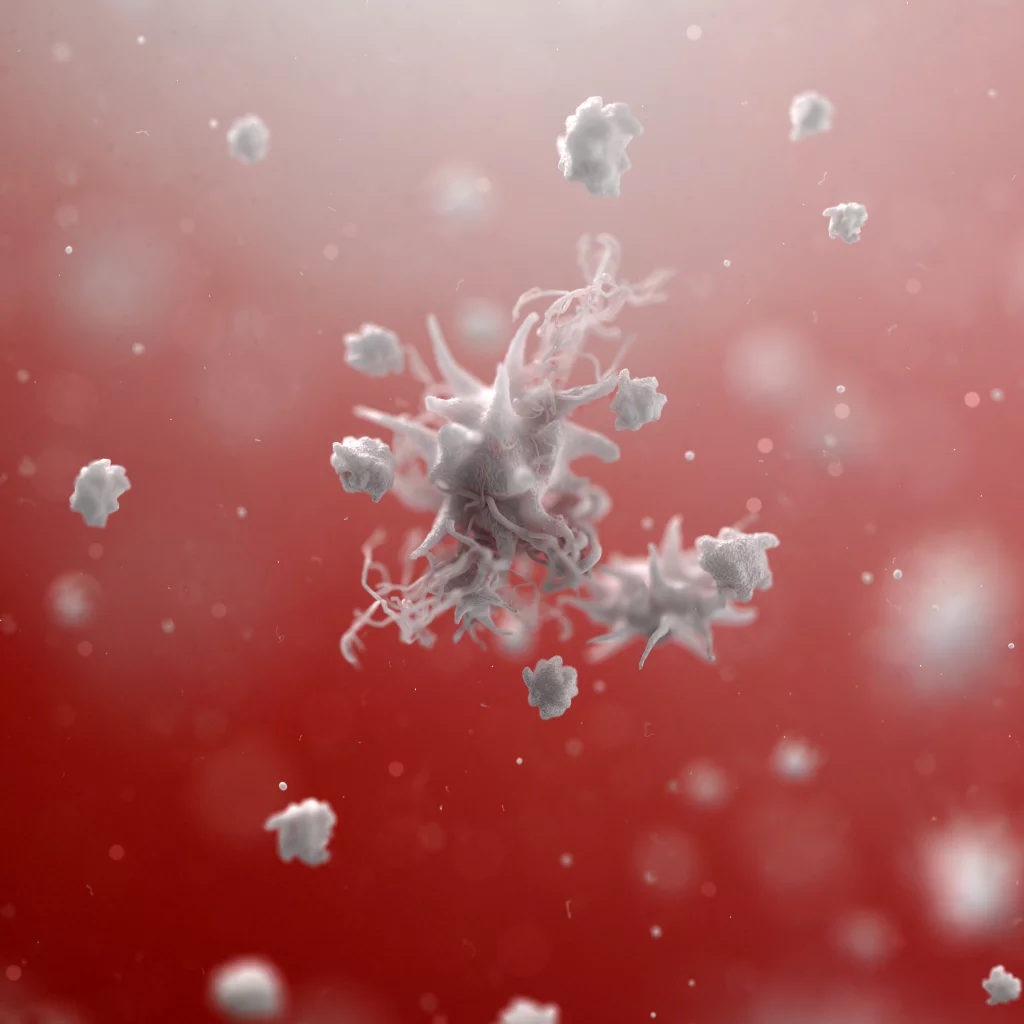What are red blood cells?
Red blood cells (RBC), are microscopic red, circular disk-shaped objects (biconcave disk) responsible for transporting oxygen (o2), carbon dioxide (CO2), nutrients, waste products, and heat.
Alternate Names
- Erythrocyte
- RCB
- Haematids
- Erythroid cells


Oxygen (o2) binds to iron molecules located in the hemoglobin.
Anatomy and structure
What are the core elements that make up the red blood cell?
- Cell membrane
- Cytoplasm
- Hemoglobin
The anatomy of a red blood cell is made up of the cell membrane, cytoplasm, and hemoglobin. The cell membrane is a thin layer that encases the cell's contents. The cytoplasm is the fluid inside the cell that provides it with structural stability and the hemoglobin is an iron-containing protein that helps to carry oxygen throughout the body and is what gives the red blood cell their color.
RBC Size: 7-8 micrometers wide, 2-3 micrometers thick
Function
Red blood cells travel through the circulatory system through veins and arteries carrying o2 picked up from the lungs to the rest of the body. Inside the RBC, o2 is bound to iron located in the cell's hemoglobin.
Red blood cells transport resources to all the tissues of the body.
Once at its destination, o2 is offloaded into the tissue cells which release CO2 that is then picked up by the RBC. The RBC then returns to the lungs, offloading the CO2 which is exhaled.
The RBC then begins the process all over in a continuing cycle until the cell dies.
RBC offloading Oxygen (o2) into tissue cells.
The average adult has roughly 25,000,000,000,000 (25 trillion) red blood cells, each of which contains hundreds of millions of hemoglobin proteins.

It takes less than a minute for a red blood cell to complete a full cycle through the body.
Life Cycle
Where are red blood cells made and where do they die?
Red blood cells are produced in the bone marrow in a process called erythropoiesis and circulate in the bloodstream for about 120 days.
Around 3-5 million RBC die each second.
Once red blood cells reach the end of their life, they are disassembled and recycled by macrophages in the spleen, liver or red bone marrow.
How do red blood cells relate to health?
Without adequate amounts of red blood cells, the body would become oxygen deprived and fail to function properly. If RBCs are not produced at adequate levels, a person can become anemic and suffer from fatigue, dizziness, and even heart problems.
Conversely, if too many RBCs are produced, it can lead to a condition known as polycythemia, which can cause high blood pressure and an increased risk of stroke.
Hematology
Part of a highly trained and specialized group of healthcare providers, hematologists study blood and blood related disorders.
Related diseases
- Anemia: affects RBC ability to carry oxygen
- Polycythemia: high levels of red blood cells in blood
- Hypoxia: When o2 levels in the blood are low
- Sickle cell: Affecting the shape and ability of the RBC to move throughout the body
- Bone marrow: Impacts production of RBC
- Cancer: Treatment for certain types of cancer can impact RBC numbers
Blood tests like a complete blood count (CBC) can be used to look for conditions like anemia, dehydration, malnutrition and leukemia by looking at the number of red blood cells present in your blood.
Fun facts
- The average adult has about 25,000,000,000,000 (25 trillion) red blood cells.
- Red blood cells are the most common type of cell in the human body.
- It takes less than an minute for a RBC to complete a full cycle from the heart, through the body and back.

Summary
Red blood cells are essential for the delivery of oxygen to the body's cells and tissues. They are produced in the bone marrow and circulate in the bloodstream for about 120 days before they are broken down and recycled by the body. Anemia, sickle cell anemia, and thalassemia are some of the diseases related to red blood cells. Red blood cells interact with other cells in the body, such as white blood cells, platelets, and other cells in the immune system.
Created by BookofCells.com
Published:
For any questions or comments please reach out!
Email: bookofcells@gmail.com
If you found our content interesting or useful, sharing helps us out and we really appreciate it!
For additional content and to be the first to see new cells follow us on Twitter!
Thank you for visiting BookofCells.com!
Explore more cells bellow
Sources
Mayo Clinic (Feb. 11, 2022). Hemoglobin test. Retrieved from https://www.mayoclinic.org/ on Dec. 20, 2022. Klinken, P. (2002). Cells in focus - Red blood cells. Retrieved from https://www.sciencedirect.com/ on Jan. 2, 2023. National Cancer Institute. Red blood cells. Retrieved from https://www.cancer.gov/ on Jan. 2, 2023. Britannica, T. Editors of Encyclopaedia (2023, January 6). red blood cell. Encyclopedia Britannica. Retrieved from https://www.britannica.com/science/red-blood-cell on Jan. 2, 2023. Knapp, S, (2021). Red Blood Cell. Encyclopedia Britannica. Retrieved from https://biologydictionary.net/red-blood-cell/ on Jan. 2, 2023. Wikipedia (Jan. 29, 2023). Hemoglobin test. Retrieved from https://en.wikipedia.org/wiki/Red_blood_cell on Jan. 29, 2023. Khan Academy. Components of blood. Retrieved from https://www.khanacademy.org/ on Jan. 4, 2023. Johns Hopkins Medicine. Hematology. Retrieved from https://www.hopkinsmedicine.org/health/treatment-tests-and-therapies/hematology on Feb. 4, 2023.Other Cell Interactions
White Blood Cell
Endothelial Cell
- Platelet Cell

